Deserts are some of the most fascinating and diverse landscapes on Earth, known for their extreme conditions, unique ecosystems, and breathtaking beauty. From the scorching sands of the Sahara to the arid expanses of the Atacama, deserts have captivated the human imagination for centuries.
In this article, we will explore eight of the most famous deserts in the world, each with its own distinct characteristics and allure.
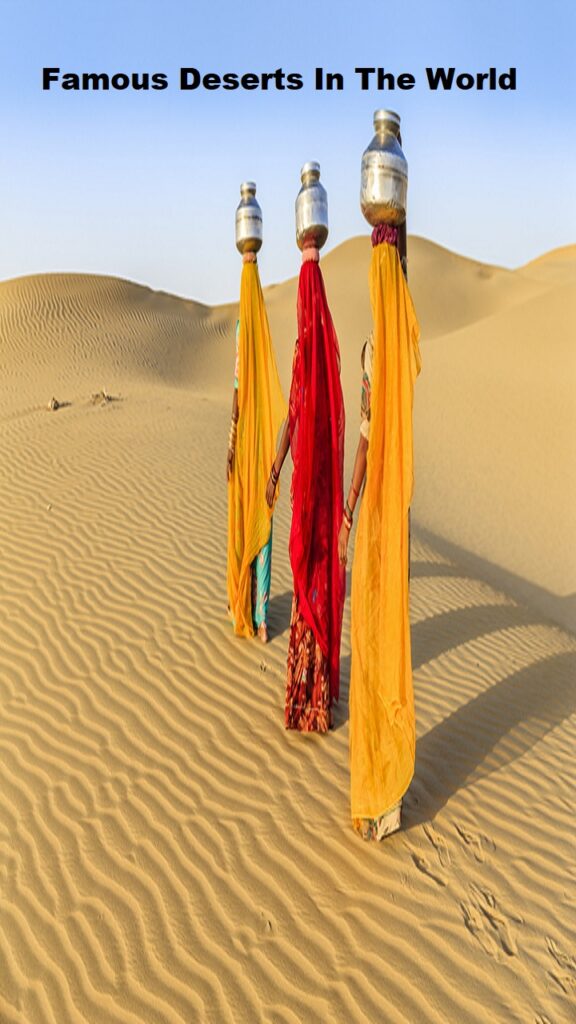
Famous Deserts In The World
1. Sahara Desert (Africa)
The Sahara Desert is the largest hot desert in the world, covering an area of approximately 9.2 million square kilometers across North Africa. It spans several countries, including Algeria, Chad, Egypt, Libya, Mali, Mauritania, Morocco, Niger, Western Sahara, Sudan, and Tunisia. The Sahara is known for its vast sand dunes, arid climate, and extreme temperatures, ranging from scorching hot during the day to freezing cold at night. Despite its harsh conditions, the Sahara is home to a variety of wildlife and unique desert ecosystems.
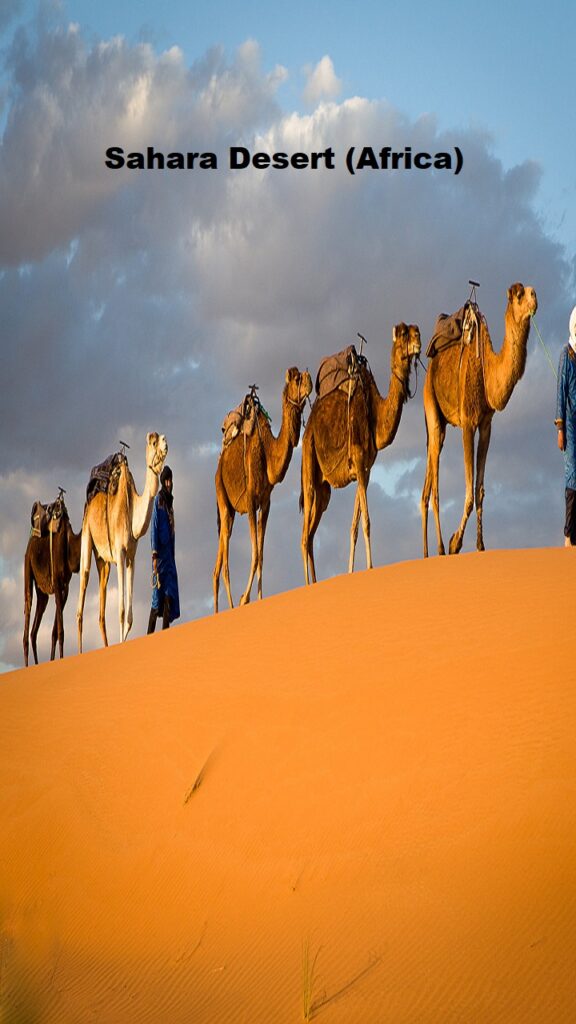
2. Arabian Desert (Middle East)
Covering much of the Arabian Peninsula, the Arabian Desert is one of the largest and most continuous stretches of sand in the world. It spans Saudi Arabia, Yemen, Oman, the United Arab Emirates, Qatar, Kuwait, Jordan, and Iraq. The Rub’ al Khali, or Empty Quarter, is the largest contiguous sand desert within the Arabian Desert. This region is characterized by its vast expanses of sand dunes, extreme heat, and minimal rainfall. The Arabian Desert has a rich history and is known for its ancient trade routes and nomadic Bedouin tribes.
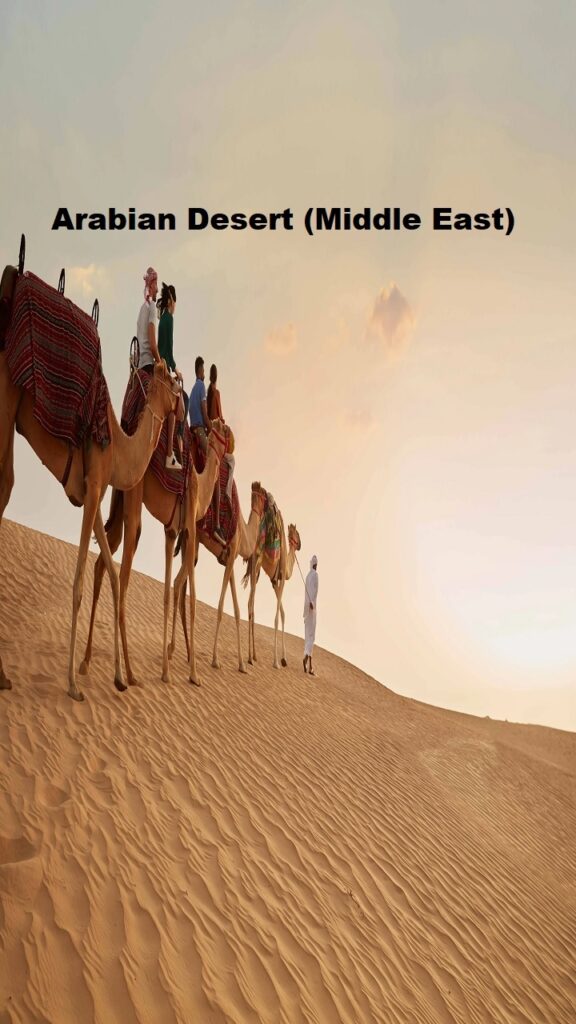
Best Deserts In The World
3. Gobi Desert (Asia)
The Gobi Desert is a vast, cold desert that spans northern China and southern Mongolia. Unlike many other deserts, the Gobi has a mix of sand dunes, mountains, and bare rock. It experiences harsh winters with temperatures that can drop well below freezing. The Gobi Desert is famous for its role in the history of the Mongol Empire and the Silk Road. It is also known for its unique wildlife, including Bactrian camels and snow leopards. As well as its paleontological discoveries of dinosaur fossils.
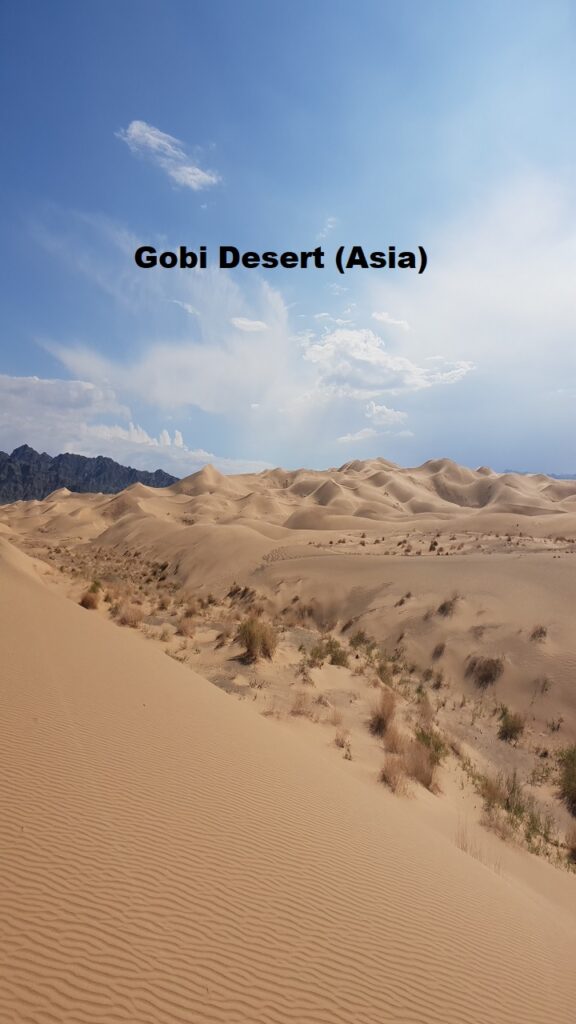
4. Kalahari Desert (Africa)
The Kalahari Desert spans Botswana, Namibia, and South Africa, covering an area of approximately 900,000 square kilometers. Unlike traditional deserts, the Kalahari receives more rainfall and supports a variety of vegetation, making it more of a semi-arid region. The Kalahari is home to the San people, also known as the Bushmen, who have a deep knowledge of the desert’s resources. The region is rich in wildlife, including lions, elephants, and meerkats, and features stunning landscapes such as the Okavango Delta.
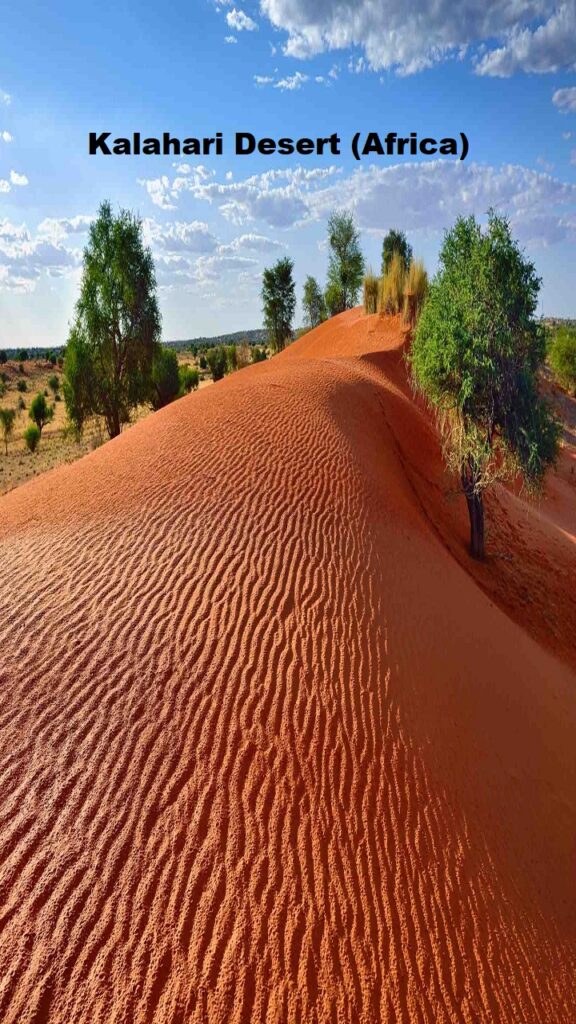
5. Mojave Desert (North America)
Located in the southwestern United States, the Mojave Desert spans California, Nevada, Utah, and Arizona. It is known for its unique Joshua trees, which are found almost exclusively in this desert. The Mojave has a diverse landscape that includes sand dunes, salt flats, and rugged mountains. It is also home to Death Valley, one of the hottest places on Earth. Despite its harsh conditions, the Mojave Desert supports a variety of plant and animal species and has a rich cultural history, including Native American heritage sites.
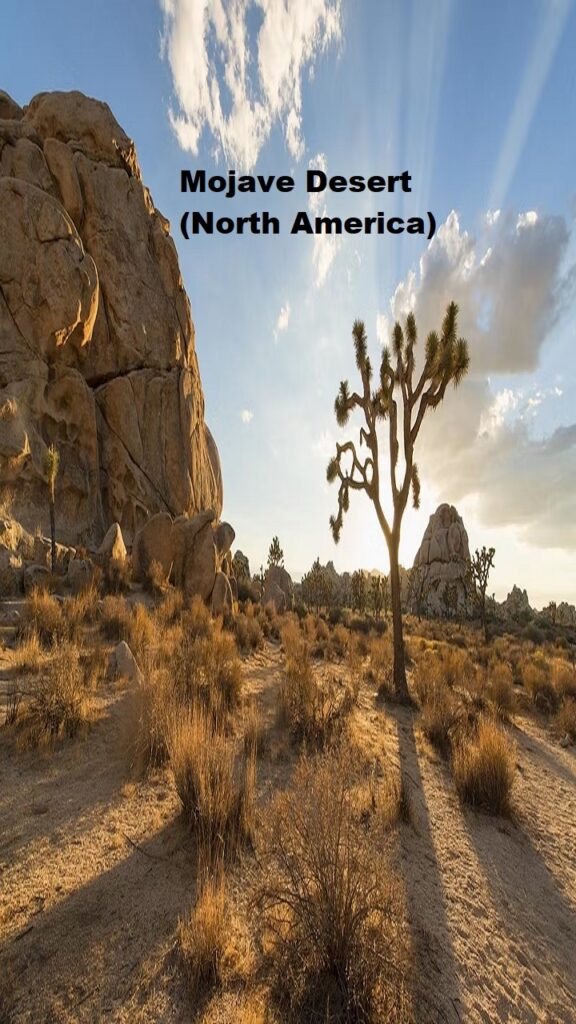
Top Deserts In The World
6. Atacama Desert (South America)
The Atacama Desert, located in northern Chile, is considered the driest desert in the world. Some areas of the Atacama receive less than 1 millimeter of rain per year, and parts of the desert have not seen any significant rainfall for centuries. The landscape is characterized by salt flats, sand dunes, and rocky outcrops. Despite its arid conditions, the Atacama Desert is home to unique flora and fauna and is a prime location for astronomical observatories due to its clear skies and minimal light pollution.
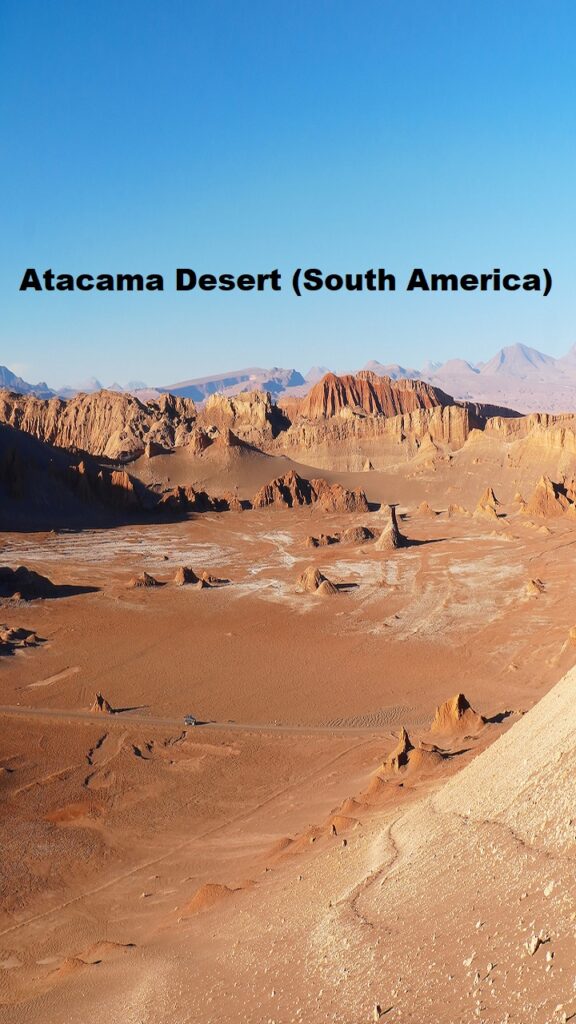
7. Great Victoria Desert (Australia)
The Great Victoria Desert is the largest desert in Australia, covering an area of around 348,750 square kilometers. It spans the states of Western Australia and South Australia. The desert known for its red sand dunes, spinifex grasses, and salt lakes. The region sparsely populated, with indigenous Aboriginal communities being the primary inhabitants. The Great Victoria Desert has a harsh climate with high temperatures and limited rainfall, but it supports a variety of wildlife, including kangaroos, dingoes, and various reptiles.
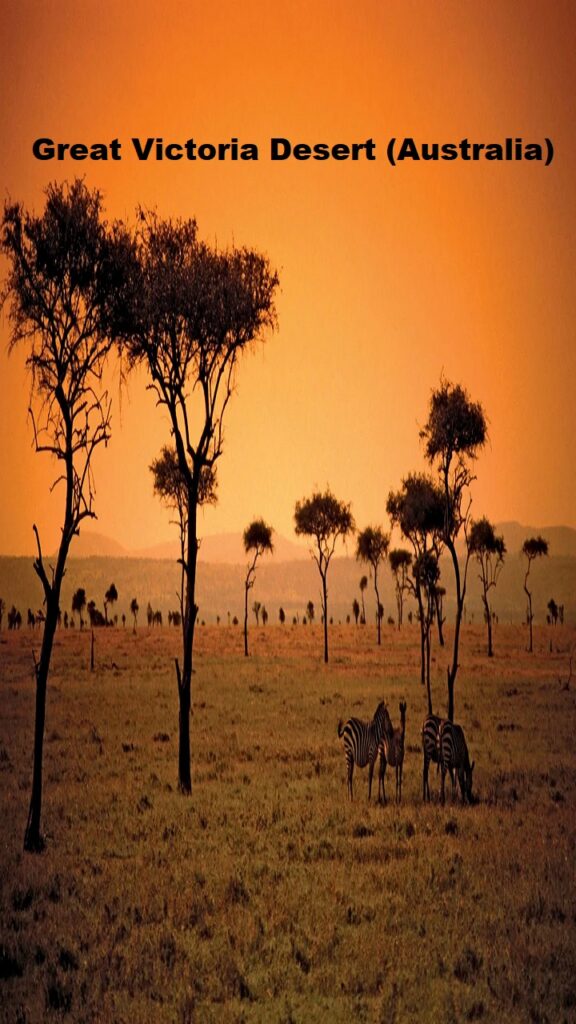
8. Namib Desert (Africa)
The Namib Desert is one of the oldest deserts in the world, estimated to be around 55 million years old. It stretches along the coast of Namibia in southwestern Africa, covering an area of about 81,000 square kilometers. The Namib known for its towering sand dunes, some of which are the highest in the world, and its stark, otherworldly landscapes. The desert is home to unique flora and fauna adapted to the harsh conditions, including the welwitschia plant and the Namib Desert beetle. The Namib Desert also features the famous Sossusvlei salt and clay pan.
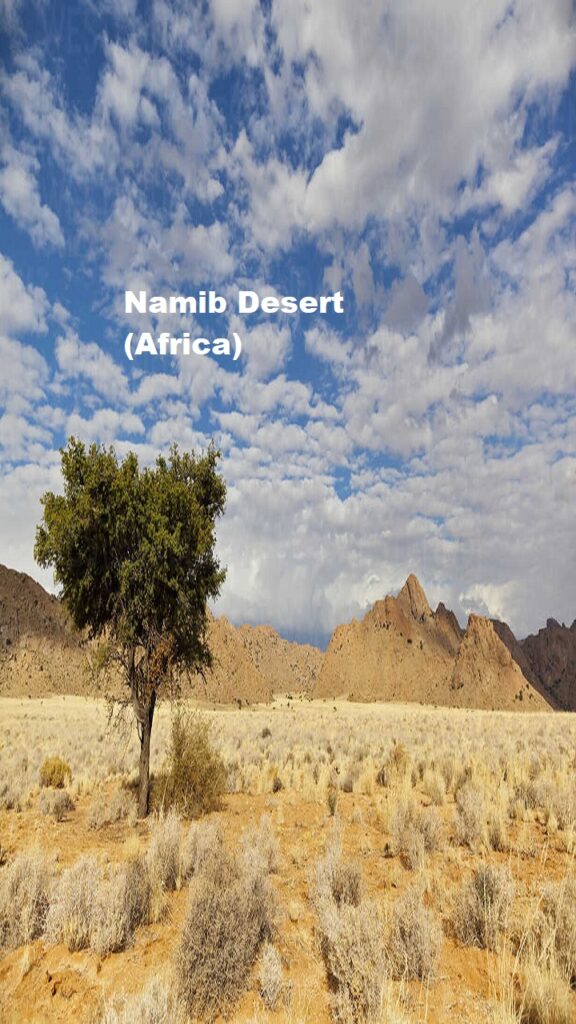
Conclusion
Deserts may seem desolate and inhospitable, but they are teeming with life, history, and natural wonders. The eight deserts highlighted in this article showcase the incredible diversity and beauty of these arid regions. If you drawn to the towering dunes of the Namib or the rich cultural heritage of the Arabian Desert. These deserts offer a glimpse into the resilience of nature and the splendor of the Earth’s most extreme environments.
Contents





